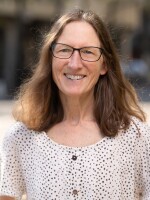While many Oregonians have cloistered inside, working from home, a project that intends to significantly boost the Willamette Valley economy has quietly started operations. KLCC takes a look at the University of Oregon's Knight Campus.
Phil and Penny Knight’s 2016, $500 million gift to fund a science campus in Eugene came with a unique, two-part goal: Create a place where experts from different disciplines interact, and make it easier to get new ideas to the market.
Bob Guldberg is the Executive Director. He said recruiting has gone very well. “Every single offer we’ve made to our top candidates has been accepted so far," said Guldberg. "And I think it’s really largely due to the fact that the Knight Campus’s mission really is resonating with people.”

Guldberg said they’ve hired eight lead researchers and intend to have 11 by the end of the year.
The flagship building with its signature glass facade had a virtual grand opening in December. Designed by Bora Architects of Portland and Ennead Architects of New York, it includes a sweeping skybridge over Franklin Boulevard, state of the art equipment, and some playful elements including a design on some of the glass panels—more on that later.
Marian Hettiaratchi is an assistant professor in bioengineering. She said students like the applied nature of the schoolwork. “I’m teaching a bio materials course right now," she said. "So they’re looking through the bio materials literature, reading papers, but one of their tasks is to come up with a proposal for something that could actually be a commercially translatable, or clinical product.”
Hettiaratchi said the eight students in the course come from three different specialty majors, noting, “I don’t think I’ve ever been in a class, taught a class or taken a class that’s had that sort of make up of students, so I think that’s really unique.”
The campus’s architecture also encourages cross pollination. It has open, two-story research focus areas and shared common spaces. Hettiaratchi shares space with two other lead researchers, a biochemist and a nanoscientist. Her work is on delivering proteins to help the body heal.

“We’re really interested in bone regeneration and also regeneration of the central nervous system after stroke and spinal cord injury," she said. "So we are working on developing proteins that have a higher potency when we put them in the body, so they should be able to enhance repair. And so those are sort of things that we think can have a real clinical impact.”
All this is happening under Pandemic restrictions. It’s made for a subdued debut, but Guldberg said there have been bright spots. “We wrote a lot of grant proposals this last year, because we couldn’t be in the labs quite as much," said Guldberg, "so the faculty had a lot of success bringing in some funding.”
Classes, too, have been different. “I had some undergraduate students who were committed to still learning about this research area despite not being able to be in the lab," Hettiaratchi told KLCC. "So we started a small journal club format where we would discuss a lot of the papers of things that would be relevant to the work.”
Hettiaratchi said in-person labs are at 50% occupancy now, and the journal club prepared students for the methods and background of the hands-on work.
The cooperative nature of the campus is extended through partnerships. Guldberg said, “We’ve partnered with the business school, we’ve partnered with the school of journalism, and so we’re giving the students and the faculty the opportunities to be trained not just in in science and engineering but also integrate aspects of science communications and innovation and entrepreneurship.”

Agreements outside the university include sharing Knight Campus facilities with new or existing companies and entities like Oregon Health Sciences University. The bio-engineering program is a partnership with Oregon State University, and is the first engineering track available at U of O. The innovation center is currently hosting a COVID testing lab that could process up to 20 thousand samples per day and currently handles around 4,000 per week.
Guldberg said several parts of the campus will be open to the public when it’s safe to do so, including the atrium and the park-like second floor terrace. He said the hope is that spinoff companies can hire graduates from the program, and generate a positive economic cycle.
“We’ve already created three start-up companies, in just the first couple years," Guldberg noted. "Not all of those companies will choose to stay in Oregon, but we certainly hope that some of them will."
Guldberg added the first structure is just the beginning. The Knight Campus will eventually have three buildings. It’ll support 750 full time employees and 550 students. Oh, and the glare-reduction pattern on the glass near the south entrance? It’s based on the sequence of duck DNA.






